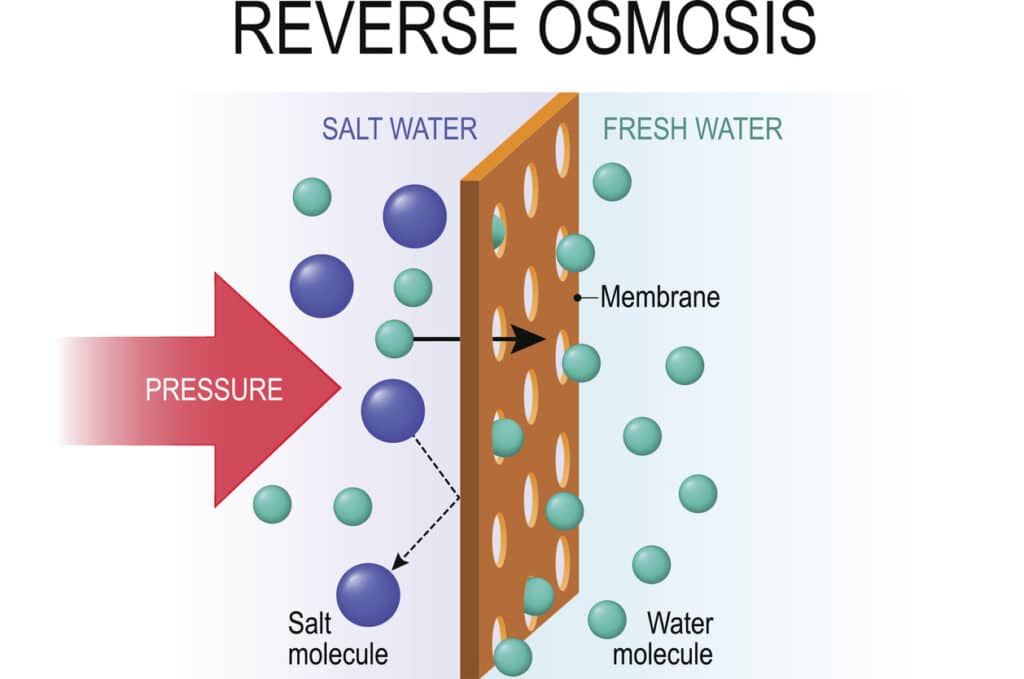Yes, but very, very little.
One glass (8 oz) of water typically contains approximately 12.5 mg of the Center for Disease Control’s (CDC) recommended 2300 mg of salt per day. If you drink the recommended 8 glasses per day, you will reach 100 mg of daily intake only, or 4% of the daily recommended salt intake. If you are further limiting your sodium intake for a low-sodium diet (or about 1500 mg per day), then the recommended 8 glasses per day of softened water will constitute a mere 6.4% of this reduced 1500 mg/day recommended daily intake for a low-sodium diet.
For household purposes, the removal of hard water minerals (usually calcium and magnesium) involves an ion-exchange process, wherein hard water ions are exchanged with salt to create soft water.
Kinetico water softeners, like all true softeners, use an ion-exchange process to remove hard water minerals. In the process of softening water, a miniscule amount of sodium or potassium is added to your water in place of the calcium and magnesium (hard water minerals) that were initially present in the water supply. Tanks filled with thousands of tiny resin beads will be installed on the main line to your home. Beside these resin-filled tanks will sit a brine tank, the tank that will hold sodium chloride or potassium chloride (salt). The resin beads have tiny holes dotting their surfaces, much like the pores of our skin. These resin pores attract certain ions from the water flowing past them. As hard water flows through the tanks of resin beads, calcium and magnesium ions become trapped in these pores. When all the pores all full, the Kinetico softener automatically switches flow to the second, twin tank of resin so your home can continuously receive soft water. This explains the importance of Kinetico’s patented twin-tank design. The “full” resin is then regenerated (rinsed) with the solution from the brine tank. As the salty water flows through the resin, the calcium and magnesium ions currently occupying the resin pores are exchanged with the sodium ions. Once this regeneration is finished, the resin is ready to soften your water. The softener will automatically switch back to this tank accordingly.
It is very important for a professional to test your water in order to provide you with appropriate water softening, filtering, and purifying options. De Anza Water Conditioning is very serious about helping our community produce SOFT, CLEAN, AND PURIFIED WATER. We will happily provide you with a complimentary on-site water consultation. Simply call to schedule your appointment.
Kinetico REVERSE OSMOSIS systems are efficient and highly recommended for PURIFYING DRINKING WATER. This advanced technology requires use of an exhaustible membrane, which is not practical or cost-effective for most households to use for treating every ounce of water that enters the home. Softened and/or filtered water is sufficient for bathing, washing, laundering, and, protecting plumbing and other infrastructure, including water heaters, dishwashers, shower heads, fixtures, flatware and glassware, and marble and granite surfaces. Special circumstance (usually with well water) can require whole-house use of reverse osmosis, but this is most often accompanied by yet another system that address acidity compatibility with the pipes in the house. As with most “special circumstances” that arise over the course of one’s lifetime, it comes with a special (aka higher) price tag.

Water Systems